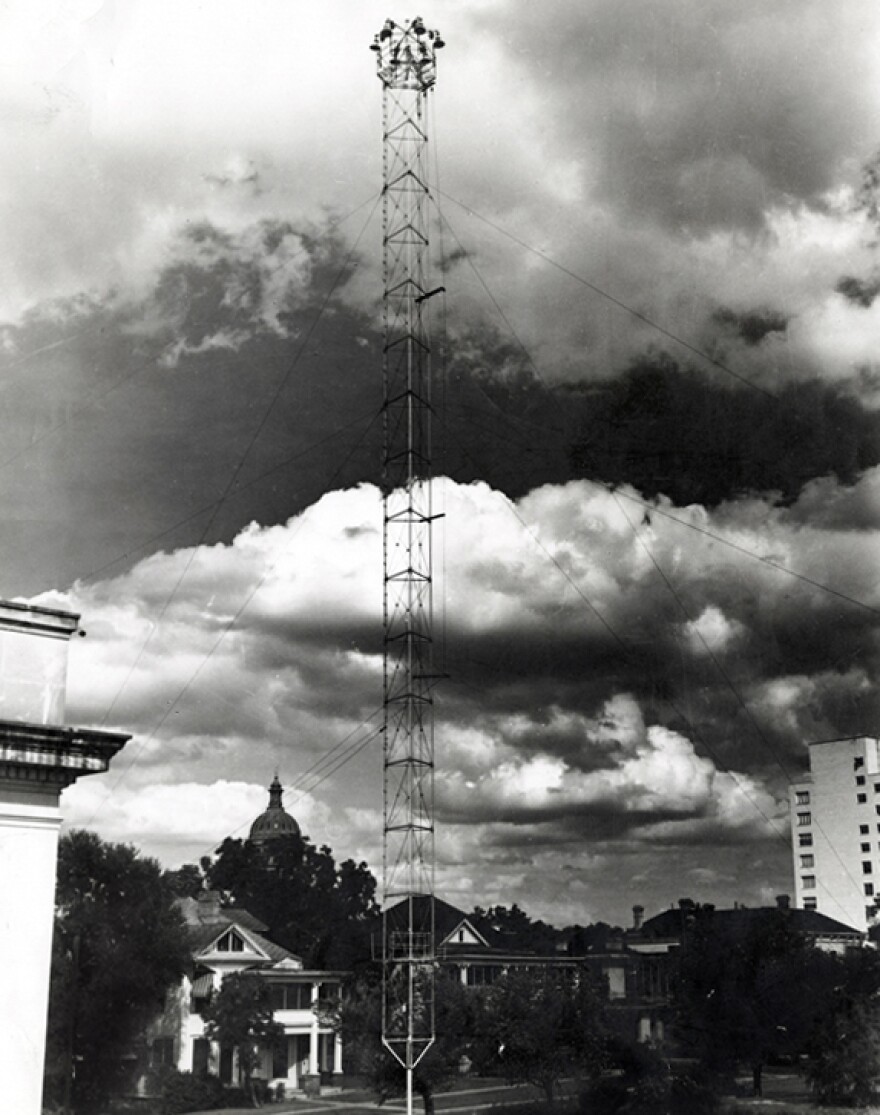“They were very concerned that it would affect the chickens and they wouldn't know when to lay the egg.”
What could shake up things so much that chickens in Austin wouldn't know the right time to do their thing? That recollection from a newspaper article can be heard in a documentary called The Last of the Moonlight Towers, which illuminates (get it?) the history of those iconic towers. Seventeen of the 31 original towers built around Austin are still standing. And though Austin wasn't the first city in the country to get moonlight towers when they went up in the 1890s, Austin is the last city that still has functioning towers.
“A moonlight tower is just that: It’s a 165-foot-tall tower,” says Jeff Kerr, who co-produced the film with Ray Spivey. “They were erected in the 1890s as part of Austin's first public street-lighting system. Instead of opting for hundreds and hundreds of street lights, Austin erected 31 of these towers around the city.”
The history of the towers is actually a little juicier than you might expect. One of the “myths” about the moonlight towers is that they were installed to try to deter crime.
“We have a section in the film dealing with myths surrounding the towers, and the most popular, perhaps, or prevalent, is that they were directed specifically in response to the servant girl murders of the 1880s,” Kerr says.
There was no direct evidence that that was the case. But Skip Hollandsworth, who wrote a book about the murders, says in the film that it doesn't make sense to think that wasn’t in the back of people's minds.
“The fact, in my opinion, is that Austin was going to put up streetlights no matter what because we wanted to be a progressive modern city,” Kerr says. “But certainly this was in the background of discussion.”
“People were as excited about this as I was, I think, when Neil Armstrong walked on the moon,” Kerr says. “This was a big, big deal. The concept that you could go outside at night and actually see -- people didn't go outside at night in those days, I suppose, and they were just thrilled to have these things.”
Austin has taken a more serious view of protecting the towers in the last 20 or so years, Spivey says, “especially in the ‘70s, when they made them historical landmarks. Before that, towers just kind of sometimes fell because people were driving and hit ‘em … [and] it wasn’t of importance to a city to replace them like it is now.”
One of the questions Kerr says he had while they were making the film was why Austin was seemingly the only city in the world that still had standing moon towers. He says, Austin got lucky. It didn't grow as quickly as those other cities.
"We didn't start putting up skyscrapers like everybody else did,” says Kerr. “So they didn't become obsolete as quickly and people just sort of forgot about them, and there was no need to take them down.”
Asked whether the moonlight towers still serve a purpose, Kerr says probably not because there's so much other light at night. But they still light up every night, though they’re not as bright.
“As we were making the film, we would come out at dusk and watch these things come on, and it sends a tingle up your spine,” Kerr says.
Kerr says he thinks the people who are aware of the towers really love them, but, still, many people don’t know about them. While Kerr and Spivey were making the film, they went around Austin asking people what a moonlight tower was. “Many people said, ‘I have no idea.’ Those that did came up with some interesting incorrect facts about them.”
People suggested that they were once hinged, so you could bend them over and work on the lights while standing on the street. Others said they were gas lamps originally, so workers had to go to light them every night.
Some people had their memories jogged when Kerr referenced the Matthew McConaughey line “party at the moon tower” from Dazed and Confused or pointed out the Zilker tree.
Neither Kerr nor Spivey has been up in one of the towers – and they’re not allowed to. According to Austin Energy, it’s against the law to climb one.
Why are some people so passionate about the towers? “It fits in with the weirdness – 'Keep Austin Weird' – that we are the last place,” says Spivey. “And you know how people are here – we defend those things to the death.”





